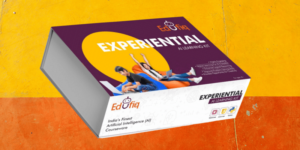COVID-19 acted like a catapult and propelled everyone into a direction that no one had ever imagined.
The pace of technology adoption by companies and users in Bharat was at a jet speed. In fact, “by 2025, there will be more internet users in rural India than in urban India” as per Biswapriya Bhattacharjee, executive vice president, Kantar.
Also, this growth of the internet is mobile device-led, only 13 percent use PC to access the internet (IAMAI-Kantar ICUBE 2020) in rural India.
As per a Google report, about 93 percent of YouTube viewers prefer watching content in Indian languages like Hindi, Tamil, Telugu, and others. Also, 90 percent of internet users prefer to use their local language to search and carry out tasks online.
So, clearly, the next phase of growth across all industries is going to come from vernacular – from entertainment and education to online commerce.
So, to cater to this rural population, to most of the learners and/or job seekers, three things will have to be done to increase the adoption of vernacular edtech in Bharat.
Access to personalised vernacular content at affordable prices
A proper infrastructure is required at the user end for the delivery of any content. Until a few years ago, a typical rural Indian user was lacking the infrastructure, be it at the macro-level (electricity, Internet) or at the micro-level (devices), still, the electricity and internet availability has to be made seamless.
With respect to the devices, parents in Bharat are ensuring that their kids get access to smartphone devices. According to ASER survey, at least 27.9 percent of households in rural India bought a new smartphone for their children’s education this year.
The opportunity lies in opening up of the vernacular hybrid learning centers as it helps solve the infrastructure problem (electricity, internet, and devices), which is a big barrier to edtech adoption in Bharat.
Another way can be by subsidising the device cost, bundling it with data and vernacular educational content, and spreading the cost over a longer period of time. Edtech companies will have to find more ways to become modular in their approach i.e., providing vernacular content in small sachet type pricing.
Government intervention and support
The government is already taking many initiatives to enable vernacular education at the grassroots level. The government, in its National Education Policy (NEP) 2020, focussed on the importance of multilingualism and mother tongue as the medium of instruction.
In India, there are 22 scheduled languages, besides the two official languages (Hindi and English). So, to bring parity in languages, the centre should enable online entrance and recruitment exams in all these languages, and this will remove language as a barrier in the learning journey of students.
Another thing that the government should do is to enable a ‘one application’ form approach for a student, and only one form policy for all exams.
Students should be saved from the rigor of filling multiple forms, especially when applying for different government jobs. Again, this will give rise to a lot of opportunities for different edtech companies to build innovative solutions.
Engaging and outcome base vernacular content
Nowadays, in Bharat, parents have FOMO (Fear of Missing Out) of enrolling their kids in English medium schools without knowing the quality of education being offered. With low-quality content and no support in learning from parents, the learning gap is widening further and even if the child is enrolled in an English medium school, he/she is not able to gain mastery over reading, writing, or speaking English.
This results in the child losing interest in studies, unlike students in cities who get enough learning support from parents.
Basically, content accessibility alone is not the solution and is not solving the engagement problem. The content has to be made engaging, especially for online learning.
The content has to be customised, personalised, made interactive, and vernacular so as to increase the engagement and learning outcomes for students – be it for K12, test prep, or skilling category.
Various elements will need to be added such as gamification coupled with advanced technologies such as AI/ML and AR/VR.
Edtech companies will have to quickly develop lots of technological capabilities, allocate more capital to cater to this surging demand of (developing and delivering) vernacular content and UI/UX (a user in Madhya Pradesh sees an altogether different screen than the user in Assam) both.
Now, everything will have to be tailor-made and personalised to fit the region and the users.
Different edtech players are catering to different segments of the value chain already. However, for the next level of growth, it is imperative to truly understand what Bharat wants and not what we want to give to Bharat.
(Disclaimer: The views and opinions expressed in this article are those of the author and do not necessarily reflect the views of YourStory.)





![Read more about the article [Funding alert] Online teaching academy enabler Edmingle raises $300K from SucSEED Indovation Fund, Mumbai Angels, others](https://blog.digitalsevaa.com/wp-content/uploads/2021/06/Imageb946-1624868046839-300x150.jpg)




